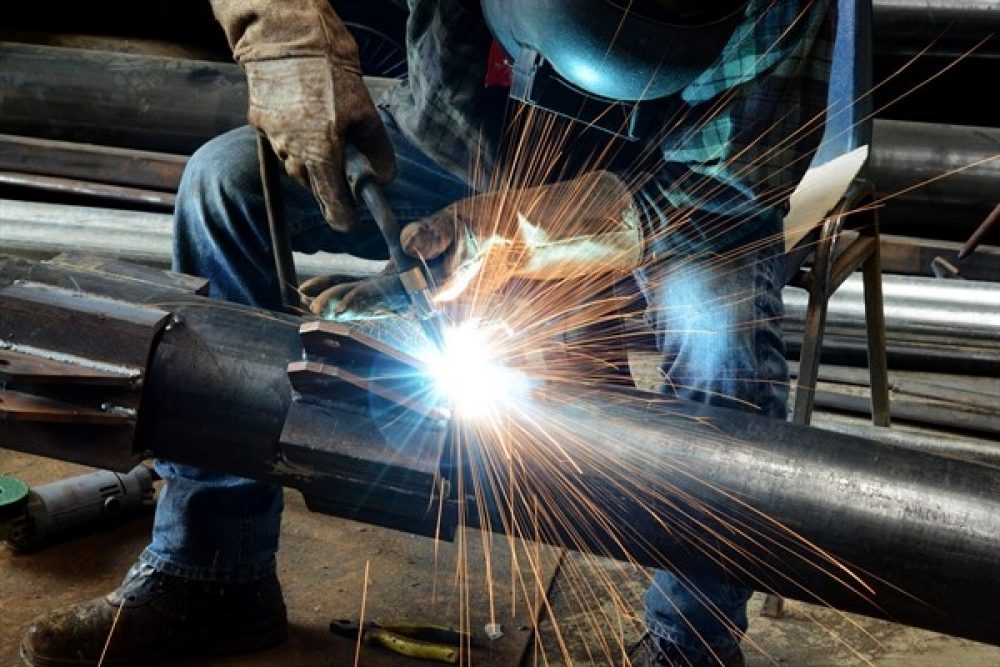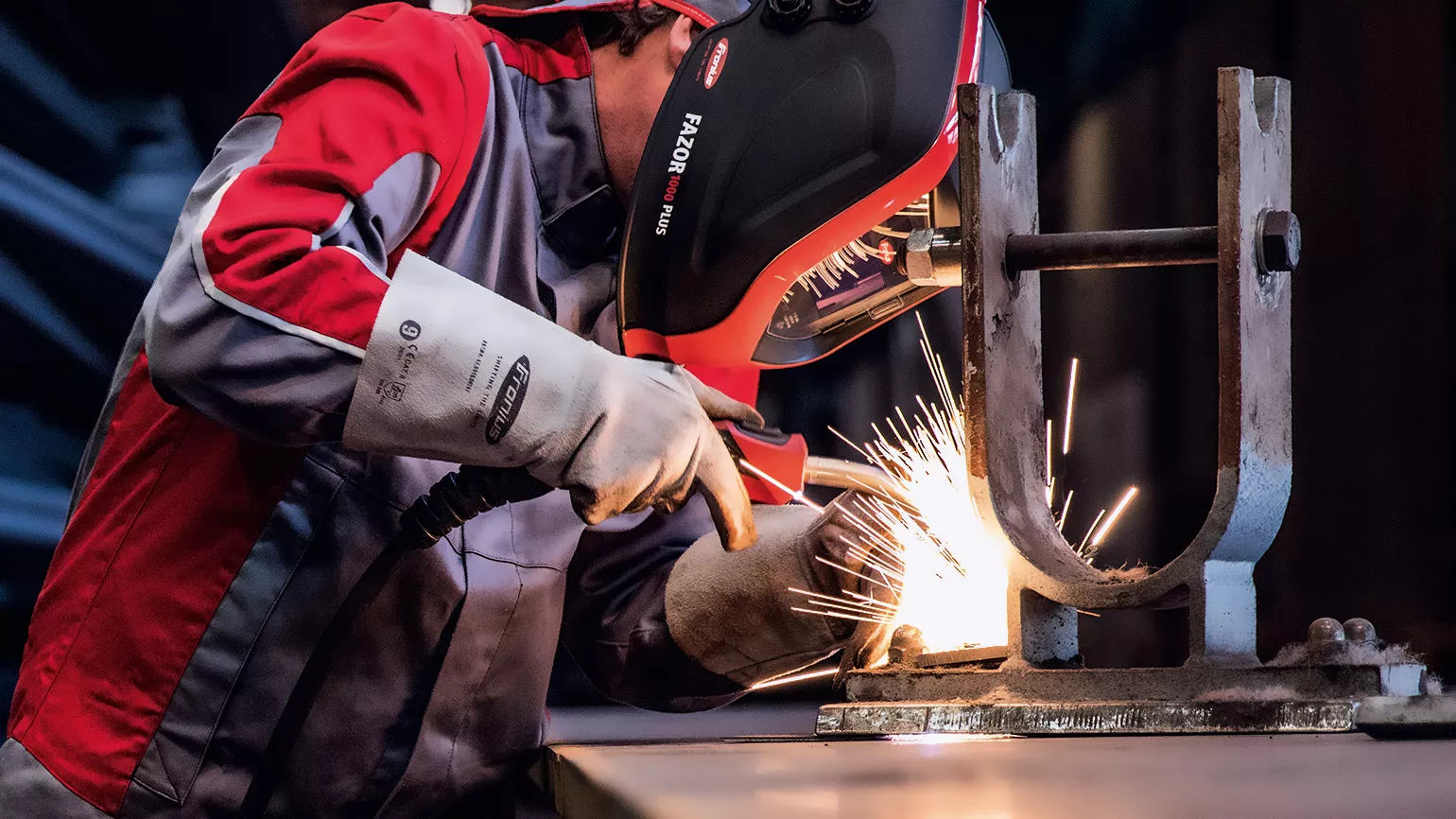All Regarding Welding: Secret Insights Into Techniques and Best Practices for Success
Welding includes a range of techniques, each suited for particular products and applications. Understanding these methods, such as GMAW, SMAW, and TIG, is essential for achieving optimal results. Moreover, the ideal devices and security methods can not be neglected. As preparation and troubleshooting play essential duties in the welding procedure, mastering these components can significantly boost the high quality of the end product. What are the key variables that ensure a successful weld?
Recognizing Various Welding Strategies
Welding methods include a range of methods, each matched to particular applications and products. Among one of the most usual strategies are Gas Metal Arc Welding (GMAW), Shielded Steel Arc Welding (SMAW), and Tungsten Inert Gas Welding (TIG) GMAW, likewise called MIG welding, is preferred for its speed and versatility, making it perfect for slim products. SMAW, or stick welding, is favored for its simpleness and efficiency in outdoor settings, especially with thicker steels. TIG welding uses accuracy and control, making it ideal for detailed work and non-ferrous metals (Fabrication). Each method has its one-of-a-kind advantages and considerations, permitting welders to pick the most effective method based on the task's needs, material kind, and desired end results. Comprehending these methods is essential for effective welding
Important Welding Tools and Tools
While various welding methods call for particular abilities, the best tools and tools are equally crucial for attaining quality outcomes. Important welding devices includes welding makers, which vary depending on the strategy-- such as MIG, TIG, or stick welding. Safety gear, consisting of gloves, helmets, and aprons, assurances safety and security and convenience during the process. In addition, components and clamps help protect products in position, guaranteeing accuracy in welds. Consumables like welding rods, cable, and protecting gas are likewise important components that influence the high quality of the weld. Devices such as cutters and grinders promote surface preparation and post-weld ending up, contributing to an expert result. Purchasing premium devices eventually boosts the performance and performance of welding jobs.
Safety And Security Practices in Welding
Appropriate safety and security techniques are crucial in the welding sector to shield employees from prospective dangers. Welders have to use suitable individual protective equipment (PPE), including headgears with appropriate shading, gloves, and flame-resistant apparel. Adequate air flow is important to lower direct exposure to harmful fumes and gases generated throughout the welding procedure. Additionally, employees need to be educated in the right handling of welding equipment to stop accidents. Fire safety and security procedures, such as maintaining flammable materials far from the welding area and having fire extinguishers easily offered, are necessary. Routine examinations of equipment and offices can assist identify prospective hazards before they bring about mishaps. By sticking to these security methods, welders can develop a safer working atmosphere and reduce risks connected with their trade.
Readying Products for Welding
Preparing materials for welding is an important step that greatly affects the quality and integrity of the end product (Montana Mobile Welding and Repair). Proper preparation includes cleansing the surface areas to get rid of contaminants such as dirt, oil, and corrosion, which can endanger the weld. Techniques such as grinding, sanding, or making use of solvents are typically employed to achieve a clean surface area. Additionally, making sure that the materials mesh well is vital; gaps can lead to weak welds. It's additionally vital to consider the alignment and positioning of the elements, as this will impact the convenience of welding and the last end result. Choosing the appropriate filler product and guaranteeing compatibility with the base metals is vital for achieving solid, long lasting welds.
Tips for Achieving High-Quality Welds
Achieving top quality welds requires focus to information and adherence to finest methods throughout the welding procedure. Appropriate joint preparation is essential, making certain surfaces are cost-free and tidy from contaminants. Choosing the ideal filler product and welding method based upon the base steels is important for ideal bonding. Maintaining regular traveling rate and angle while welding can promote and avoid flaws harmony. Additionally, managing warm input is crucial; extreme warmth can bring about warping and compromised joints. Consistently evaluating the welds throughout the procedure enables for immediate changes if required. Finally, employing proper post-weld treatments, such as cleansing and anxiety alleviation, can boost the sturdiness and stability of the weld, eventually ensuring an effective end result.
Fixing Usual Welding Issues
Welding often offers obstacles that can influence the top quality and stability of the end product. Common problems such as porosity, inconsistent weld grains, and overheating can occur, each needing details repairing methods. Comprehending these troubles is vital for welders to improve their abilities and achieve perfect outcomes.
Porosity Issues Discussed
Porosity can commonly be ignored, it continues to be a critical concern in welding that can endanger the integrity of an ended up product. Porosity describes the existence of tiny gas pockets within the weld bead, which can weaken the joint and lead to premature failure. This trouble commonly arises from pollutants, moisture, or incorrect shielding gas protection during the welding process. To minimize porosity, welders need to confirm that the base products are tidy and completely dry, use appropriate protecting gases, and keep consistent welding specifications. Routinely checking the devices and setting can additionally help determine prospective problems prior to they my sources show up in the weld. Dealing with porosity properly is important for achieving strong, long lasting welds that fulfill top quality requirements.

Irregular Weld Beans
Irregular weld beads can considerably influence the top quality and toughness of a completed item. Numerous factors add to this concern, consisting of incorrect traveling speed, incorrect amperage settings, and inconsistent electrode angles. When the welder relocates also quickly, a grain may show up narrow and do not have infiltration, while moving also gradually can create too much buildup. Furthermore, making use of the wrong amperage can result in either undercutting or excessive spatter, both of which concession weld integrity. The welder's technique, such as inconsistent lantern motion, can also result in uneven grain look. To minimize these problems, welders should focus on preserving constant, controlled motions and ensuring proper tools settings to achieve uniformity in their welds. Uniformity is key to attaining trustworthy and strong welds.
Overheating and Bending Issues
Excessive warmth throughout the welding procedure can lead to significant overheating and buckling problems, impacting the structural honesty of the work surface. These issues typically show up as distortion, which can jeopardize positioning and fit-up, making additional setting up challenging. Aspects contributing to overheating consist of the option of welding parameters, such as voltage and take a trip rate, in addition to the sort of product being bonded. To alleviate these issues, welders should preserve regular travel speed and appropriate warmth input while keeping an eye on the workpiece temperature. Furthermore, preheating or post-weld heat therapy can assist minimize tensions caused by quick air conditioning - Montana Mobile Welding and Repair Belgrade. Routine evaluation and adherence to ideal techniques are essential in preventing overheating and making sure the long life and dependability of bonded structures
Often Asked Questions
What Are the Career Opportunities in the Welding Sector?
The welding industry uses diverse occupation opportunities, including settings as welders, designers, examiners, and instructors. Experts can operate in production, construction, aerospace, and automobile fields, gaining from strong need and affordable incomes in various duties.
Just How Can I Enhance My Welding Rate Without Giving Up Top Quality?
To improve welding rate without compromising quality, one need to practice efficient strategies, maintain devices, enhance settings, and boost hand-eye control. Normal training and looking for feedback can also considerably add to achieving quicker, premium welds.
What Qualifications Are Available for Welders?
Countless certifications exist for welders, including those from the American Welding Culture (AWS), the National Facility for Building And Construction Education and Research Study (NCCER), and different industry-specific organizations. These credentials improve reference employability and demonstrate ability proficiency.
Exactly How Does Welding Influence the Features of Metals?
Welding affects the residential or commercial properties of metals by modifying their microstructure, which can result in adjustments in stamina, hardness, and ductility. Heat input and cooling prices during the process considerably influence these product qualities.
Can I Weld Dissimilar Metals Together?
